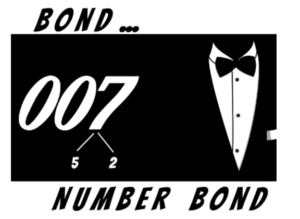
This is the first in a series of posts that TCS Math Specialist Tom Pittard is writing about Singapore Math.
One of the major features used by Singapore Math at all grade levels is the number bond. A number bond is a way to emphasize the part/whole relationship among quantities in the world all around us. Your class has 23 students, made up of 14 boys and 9 girls. Your family of 4 people has 2 children and 2 adults. The bowl of fruit has 4 bananas, 3 apples and 3 oranges that make up the whole group of 10 fruit pieces. Number bonds give students a framework within which they can put parts together and break amounts into smaller more manageable parts to help develop more advanced thinking.
Depending on the developmental level and the relationship being described, students encounter number bonds in a variety of visual representations. Early on, students see simple bonds with color-coded circles and pictures of objects (just like the ones they have on the table in front of them).
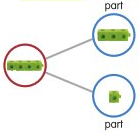
Next, they work with the same format, but with numbers, to label the parts and whole. Teachers are deliberate about building the understanding that the relationship remains consistent, despite the orientation of the circles.
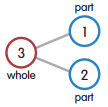

The number bonds can also be shown as a rectangular bar that clearly illustrates the relationship. This format variety encourages flexible thinking and also reinforces the broad application of the part/whole relationship.

Number bonding is used in a progression of ways as students develop in their math thinking. In kindergarten and first grade, students create number stories as a way to introduce them to the concept of part/whole relationships. By creating number stories, talking with teachers and peers about things in the room and pictures of real world objects, they are learning to break the whole group into different number bond combinations. In a picture, there are 4 ducks in the pond and 3 ducks on the shore which makes a whole group of 7 ducks. Students also learn addition and subtraction by having the whole group or one part of the group missing from the bond. Soon they can move to applying the math symbols (+, -, =) to write their own number sentences. Using number bonds also serves to establish the inverse relationship between these foundational operations. As students work on developing basic addition and subtraction facts and move to working with two digit numbers, number bonds are also used to illustrate and reinforce place value.
By second and third grades, students are using flexible number bonding with two and three digit numbers to “shift” tens or hundreds to facilitate mental math and lay the groundwork for regrouping for multidigit addition and subtraction.
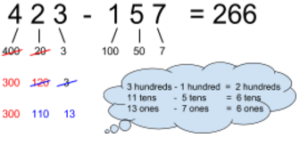
Students also use number bonds to break numbers into parts as they are learning multiplication facts. By breaking 8 into 5 and 3, students can use the smaller multiplication facts that they do know (5’s and 3’s) to figure out facts that they are learning.
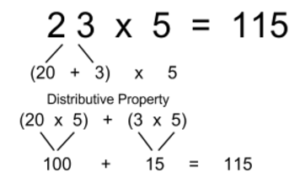
Breaking numbers apart and putting them back together in this way demonstrates and teaches both the distributive and associative properties of multiplication, which students also learn for future applications.
By arming students with a solid understanding of the flexible part/whole relationship and how they can maximize their manipulation of quantities, we are giving them a “License to Break.”









